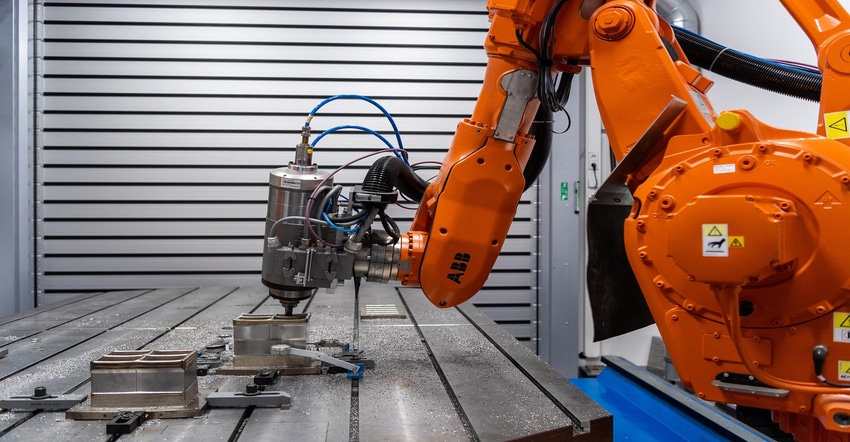Can Additive Compete with Traditional Manufacturing in Aerospace?
While additive manufacturing proved itself during the pandemic, applying the technology to aerospace applications may be a larger challenge.
March 1, 2022

Like virtually every other industry, aerospace has been scrambling for parts in an unstable supply chain. Some companies are turning to additive manufacturing (AM) to fill the gaps. “For supply chain disruptions, additive manufacturing is helping by reshoring some production,” Ivan Madera, CEO and founder of Morf3D, told Design News. “We’re taking advantage of a technology that can address the restraints on the supply chain. Reshoring is driving a business case for AM.”
Here are some examples of additive manufacturing used in aerospace:
The Case for Polymer AM Production
Manufacturers are looking to additive manufacturing to help overcome supply chain instabilities. When it comes to the ability of additive manufacturing to step in for production parts, there are two stories. One is polymers and the other is metals.
Plastic parts are likely to be the low-hanging fruit for reshoring production. “You can use additive manufacturing for the plastics that you would get ordinarily offshore,” said Madera. “There is an opportunity to replace some of that and ease the immediate pain points, but only to a degree. While additive manufacturing is not going to be used for mass production in the millions, there is a sweet spot for mid to low volume.”
Metal AM Production
As for metal parts, turning to additive manufacturing may not be a likely solution. “On the metal side, you’re looking at a different level of complexity,” said Madera. “Additive manufacturing can address the short-term need for items, but there is a significant pricing difference between additive metal parts and metal parts produced by traditional manufacturing.”
Madera also noted that 3D printing as a production technology will only work with commercial parts. “Additive manufacturing can work for commercial applications, but that’s way different than meeting the regulations for defense systems,” said Madera. “You have an opportunity for reshoring commercial applications in short term, but there’s no replacing traditional manufacturing in the world of defense applications. One hundred percent of the parts for defense have to be domestic.”
A Center for AM in Aerospace Design and Manufacturing
To help develop AM solutions for the aerospace industry, Morf3D launched the Applied Digital Manufacturing Center last year. The center brings together several partners, including, Morf3D’s new owner, Nikon. “Collaboration is the reason we’re doing what we're doing at our manufacturing center. The agency is a consortium of industry partners,” said Madera. “The folks at the center include equipment manufacturers, Siemens, and a few others.”
The goal is to bring together disparate experts to wrestle with the issues involved in using AM for design and manufacturing in aerospace. “The intention is to collaborate to solve complex design and manufacturing. We seek to solve a specific problem,” said Madera. “At the center, we have access to experts that can and solve problems by, using equipment that already exists, equipment that is coming along, or equipment that needs to be created.”
Looking to the AM Future in Aerospace
Madera pointed to some of the advancements that are making AM more effective in aerospace design. “Software has made a difference. Two sides to AM software – simulation and generative design,” said Madera. With simulation, we’re creating a digital twin upfront. We validate the digital twin before we create the structure. We want to create the digital twin and put it through The other part of the digital factory so we have inspection and integration in ways that don't exist today.”
The other part of the AM software equation includes generative design tools. “Generative design is part of the software that helps move AM into manufacturing,” said Madera. “But instead of altering the part to match the capabilities, we can alter the equipment to respond to the design. If you can see that we can print it. It's just a matter of application development and time.”
About the Author(s)
You May Also Like





